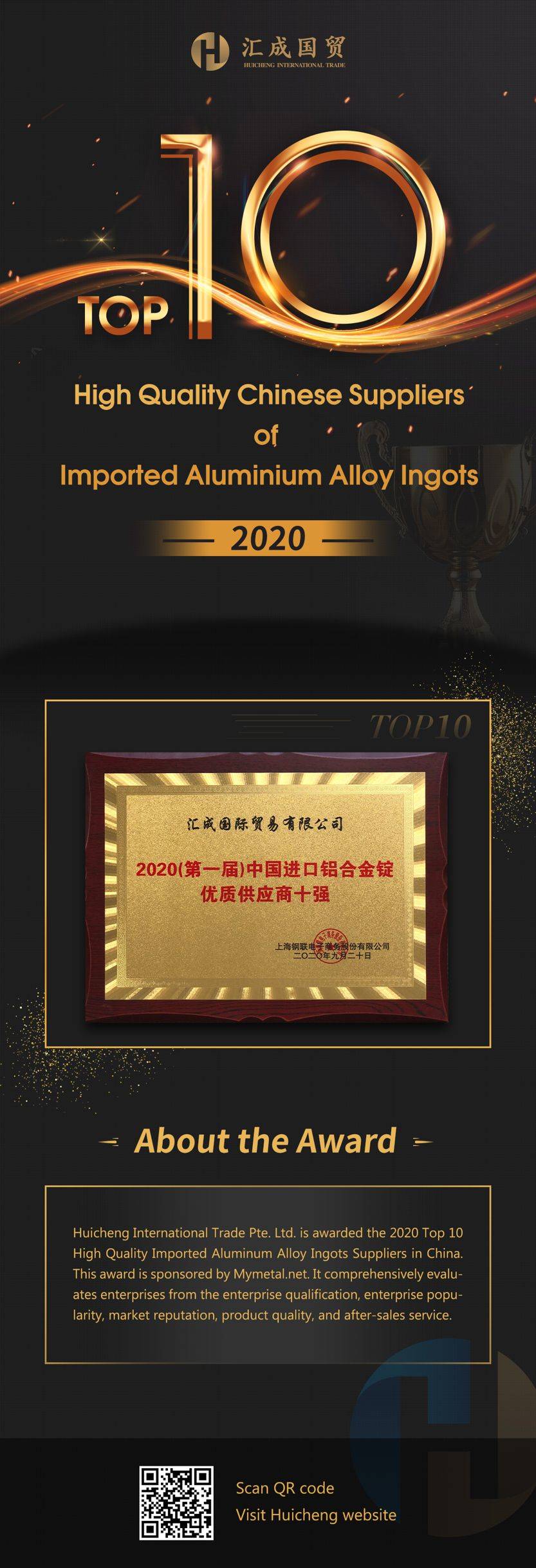
Fundamentals
During the prevalence of COVID-19 in 2021, the policy persisted in implementing rigorous control measures. This along with high inflation, resulted in commodity prices reaching a new record high. However, the fourth quarter witnessed a steep decline in these high levels and market sentiment remained subdued as we entered 2022. Economic activities in Shanghai were suspended for two months from the end of March due to the worsening pandemic situation, causing the city’s GDP in the second quarter of 2022 to drop by 13.7% year-on-year.
Global debt stocks fell significantly
According to Deutsche Bank’s data on the global economic market, US treasury bonds experienced a decline of over 13% in the first half of this year, marking the largest drop in the first half of a year since the approval of the US Constitution in 1788. Additionally, Ltalian treasury bonds saw a massive plummet of 25% in response to the European Central Bank’s first interest rate hike in 11 years, marking the biggest collapse since the Euro zone crisis. Meanwhile, emerging market bonds also fell significantly, dropping nearly 20%.
As for the stock market, the S&P 500 index fell by 25% while the NASDAQ dropped by 34-35% during the first half of the year. Bitcoin, on the other hand, experienced a staggering 64-65% decline.
Commodity shocks
The commodity sector is currently experiencing the strongest surge since the First World War, with Oil and Gas prices rising by 50% and 60%, respectively, thereby contributing to the escalation of global inflation. This marks the most significant increase in Oil prices during the first half of a year since 2009, with Wheat and Corn prices also experiencing an uptick of 20% and 30%, respectively.However, starting from March, a basket of industrial metals traded on the London Metal Exchange has been witnessing the worst quarterly performance since the financial crisis in 2008, while the spot gold prices have gradually declined to their starting level at the beginning of the year.
US dollar strength
During the first half of the year, the US dollar gained strong momentum and appreciated by 9% against a basket of major global currencies, while its exchange rate against the yen increased by 15.5%, reaching its lowest level since 1998.Turkey’s inflation and policy-related issues led to a 20% devaluation of the lira, while Egypt, being one of the largest wheat importers, was compelled to devalue its currency by over 15%.On the other hand, the Russian ruble exchange rate experienced a significant appreciation of 40%.
Financial data

European and American CPI reached a new high
The National Bureau of Statistics announced on July 9 that in June, the CPI rose by 2.5% year-on-year, while the PPI dropped to 6.1% year-on-year. The Coal mining and washing industry witnessed a decline of 5.8 percentage points, the Non-ferrous metal smelting and rolling processing industry dropped by 2.2 percentage points, and the gas production and supply industry went down by 0.2 percentage points. Additionally, the ferrous metal smelting and rolling processing industry experienced a 3.7% decrease in prices.On July 14, the US Department of Labor revealed that the CPI for June surpassed expectations and reached a new high of over 40 years since December 1981, standing at 9%. Moreover, the US PPI increased by 11.3% year-on-year, exceeding market expectations and nearing the historical high.On July 20, both the UK and Canada reported a new 40-year high in CPI for June, with the UK witnessing a year-on-year increase of 9.4%, and Canada experiencing an 8.1% year-on-year increase.
China’s PMI returns to above the critical point
China’s Caixin manufacturing PMI dropped below the watershed of 50 in April, indicating a decline in prosperity. However, in June, the PMI climbed to 50.2%, surpassing the critical point and signifying a recovery in the manufacturing industry.In the United States, the initial value of the Markit manufacturing PMI hit a 23-month low in June, and the manufacturing output index dipped below the boom and bust line for the first time in two years.Meanwhile, the Euro zone reported an initial value of 49.6 for the IHS Markit manufacturing PMI, falling short of the expected 51.
Focus

Market participants are increasingly worried about the recession
The escalation and deterioration of relations between Russia and Uzbekistan, coupled with supply concerns arising from the war situation and a new round of financial sanctions imposed by Western countries on Russia, as well as the geopolitical conflict, have caused a rise in the commodity market and triggered a new momentum for some commodities.
Europe and the United States raised interest rates comprehensively
In June, the Federal Reserve’s FOMC implemented a 75 basis point interest rate hike, marking the largest increase in nearly 30 years since 1994. The European Central Bank followed suit on July 21, raising interest rates by 50 basis points, which was more than anticipated. This was the first interest rate increase by the European Central Bank in 11 years, but negative interest rates have been in place for 8 years. The Bank of England continued to raise interest rates for the fifth consecutive policy meeting.The Swiss Central Bank unexpectedly announced a 50 basis point interest rate increase, the first since 2007.New Zealand raised interest rates for the third consecutive month, with a 50 basis point hike, opening the most aggressive tightening cycle in its history.The Bank of Canada took the lead by implementing a 100 basis point interest rate hike, the largest single rate increase since 1998.
Asia is catching up for interest rates
The Central Bank of Korea made history on July 13 by raising interest rates by 50 basis points, the first time it has used interest rates as the primary policy tool since 1999. Similarly, the Philippine Central Bank also made a significant move by raising its benchmark interest rate by 75 basis points, marking the largest increase in 22 years.
Middle East countries also act
Bahrain and the United Arab Emirates raised interest rates by 75 basis points; Saudi Arabia plus 50 basis points.
Commodity Market
Bahrain and the United Arab Emirates raised interest rates by 75 basis points;Saudi Arabia increased 50 basis points.

We are glad to inform that on 11th Nov 2022, Huicheng International Trade Pte. Ltd. will be relocated to:
Room 810 Building B, Luneng International Centre
No 52 Shi Bo Guan Road, Shanghai 200126, China
Please note that our telephone and fax numbers will remain unchanged.
Fundamentals
During the prevalence of COVID-19 in 2021, the policy persisted in implementing rigorous control measures. This along with high inflation, resulted in commodity prices reaching a new record high. However, the fourth quarter witnessed a steep decline in these high levels and market sentiment remained subdued as we entered 2022. Economic activities in Shanghai were suspended for two months from the end of March due to the worsening pandemic situation, causing the city’s GDP in the second quarter of 2022 to drop by 13.7% year-on-year.
Global debt stocks fell significantly
According to Deutsche Bank’s data on the global economic market, US treasury bonds experienced a decline of over 13% in the first half of this year, marking the largest drop in the first half of a year since the approval of the US Constitution in 1788. Additionally, Ltalian treasury bonds saw a massive plummet of 25% in response to the European Central Bank’s first interest rate hike in 11 years, marking the biggest collapse since the Euro zone crisis. Meanwhile, emerging market bonds also fell significantly, dropping nearly 20%.As for the stock market, the S&P 500 index fell by 25% while the NASDAQ dropped by 34-35% during the first half of the year. Bitcoin, on the other hand, experienced a staggering 64-65% decline.
Commodity shocks
The commodity sector is currently experiencing the strongest surge since the First World War, with Oil and Gas prices rising by 50% and 60%, respectively, thereby contributing to the escalation of global inflation. This marks the most significant increase in Oil prices during the first half of a year since 2009, with Wheat and Corn prices also experiencing an uptick of 20% and 30%, respectively.However, starting from March, a basket of industrial metals traded on the London Metal Exchange has been witnessing the worst quarterly performance since the financial crisis in 2008, while the spot gold prices have gradually declined to their starting level at the beginning of the year.
US dollar strength
During the first half of the year, the US dollar gained strong momentum and appreciated by 9% against a basket of major global currencies, while its exchange rate against the yen increased by 15.5%, reaching its lowest level since 1998.Turkey’s inflation and policy-related issues led to a 20% devaluation of the lira, while Egypt, being one of the largest wheat importers, was compelled to devalue its currency by over 15%.On the other hand, the Russian ruble exchange rate experienced a significant appreciation of 40%.
Financial data

European and American CPI reached a new high
The National Bureau of Statistics announced on July 9 that in June, the CPI rose by 2.5% year-on-year, while the PPI dropped to 6.1% year-on-year. The Coal mining and washing industry witnessed a decline of 5.8 percentage points, the Non-ferrous metal smelting and rolling processing industry dropped by 2.2 percentage points, and the gas production and supply industry went down by 0.2 percentage points. Additionally, the ferrous metal smelting and rolling processing industry experienced a 3.7% decrease in prices.On July 14, the US Department of Labor revealed that the CPI for June surpassed expectations and reached a new high of over 40 years since December 1981, standing at 9%. Moreover, the US PPI increased by 11.3% year-on-year, exceeding market expectations and nearing the historical high.On July 20, both the UK and Canada reported a new 40-year high in CPI for June, with the UK witnessing a year-on-year increase of 9.4%, and Canada experiencing an 8.1% year-on-year increase.
China’s PMI returns to above the critical point
China’s Caixin manufacturing PMI dropped below the watershed of 50 in April, indicating a decline in prosperity. However, in June, the PMI climbed to 50.2%, surpassing the critical point and signifying a recovery in the manufacturing industry.In the United States, the initial value of the Markit manufacturing PMI hit a 23-month low in June, and the manufacturing output index dipped below the boom and bust line for the first time in two years.Meanwhile, the Euro zone reported an initial value of 49.6 for the IHS Markit manufacturing PMI, falling short of the expected 51.
Focus

Market participants are increasingly worried about the recession
The escalation and deterioration of relations between Russia and Uzbekistan, coupled with supply concerns arising from the war situation and a new round of financial sanctions imposed by Western countries on Russia, as well as the geopolitical conflict, have caused a rise in the commodity market and triggered a new momentum for some commodities.
Europe and the United States raised interest rates comprehensively
In June, the Federal Reserve’s FOMC implemented a 75 basis point interest rate hike, marking the largest increase in nearly 30 years since 1994. The European Central Bank followed suit on July 21, raising interest rates by 50 basis points, which was more than anticipated. This was the first interest rate increase by the European Central Bank in 11 years, but negative interest rates have been in place for 8 years. The Bank of England continued to raise interest rates for the fifth consecutive policy meeting. The Swiss Central Bank unexpectedly announced a 50 basis point interest rate increase, the first since 2007.New Zealand raised interest rates for the third consecutive month, with a 50 basis point hike, opening the most aggressive tightening cycle in its history.The Bank of Canada took the lead by implementing a 100 basis point interest rate hike, the largest single rate increase since 1998.
Asia is catching up for interest rates
The Central Bank of Korea made history on July 13 by raising interest rates by 50 basis points, the first time it has used interest rates as the primary policy tool since 1999. Similarly, the Philippine Central Bank also made a significant move by raising its benchmark interest rate by 75 basis points, marking the largest increase in 22 years.
Middle East countries also act
Bahrain and the United Arab Emirates raised interest rates by 75 basis points; Saudi Arabia increased 50 basis points.
With the global warming and the destruction of ecological environment, the world’s major economies have committed to the time target from carbon peak to carbon neutral. China as the world factory, its time from carbon peak to carbon neutral is shorter than that of other countries, forming a severe challenge. Therefore, with the background of achieving carbon neutralization, and the goal of creating a green development closed loop and promoting the innovative and integrated development of new materials and automobile industry in the automobile industry chain, Nonferrous Metals Society of Shanghai, Shanghai Society of Automotive Engineers, Suzhou Die Casting Technology Association and SMM jointly organized the “Casting Aluminum Industry New Journey”. From March 26 to 27, under the guidance of Shanghai Municipal Commission of Economy and Informatization and the support of HUICHENG and the other two, SAIC, FAW-Volkswagen, Geely, SAIC Gearbox, Konsberg Automotive and other new energy automobile die-casting experts set up an automobile new material investigation team. We visited four die-casting enterprises in Jiangsu, including Suzhou Lida, Suzhou Jincheng, Suzhou Yadelin and Kunshan Laijie, to discuss automobile material solutions and the application of casting of aluminum alloy in reducing automobile body weight and cost, as well as improving efficiency and the performance of automobile products, as the key direction of technology research and development of automobile enterprises.
During the meeting, experts and entrepreneurs exchanged extensively, from upstream raw materials, research and development of aluminum alloy new materials to die casting process, General Manager Ms Chen of HUICHENG reported the macro analysis of raw material market and introduced overseas aluminum alloy to supplement the shortage of waste materials in China’s market under the new Solid Waste Law.
Entrepreneurs are concerned about the soaring raw materials prices in 2020 and the extrusion of die-casting enterprises in downstream industries such as automobiles. In the meeting, General Manager Mr Shen of Yadelin put proposed suggestions and plans for quarterly price adjustment. General Manager Mr Mao of Suzhou Jincheng has cooperated with university researchers to develop new materials, which can increase the properties of castings and reduce the cost.
Secretary General Mr Zhang of Suzhou Die Casting Technology Association has conducted a long-term research on the die casting industry at home and abroad; he expounded the development history of China’s die casting industry, presented the gap between Chinese and foreign die casting enterprises, and discussed die casting technology and new materials with automobile die casting experts of the delegation.
During the factory visit, we saw the ‘Giant’ Buhler 4400t die-casting island in Yadelin die-casting workshop, which requires a great contribution in introducing the equipment and is rare in China. From now, Tesla Shanghai has 6000t die-casting island, which was put into operation and mass production in February this year.
In the investigation process, our company went deep into the smelting and casting enterprises in the spirit of learning. We visited the production line of aluminum alloy melting, heat preservation, liquid transportation, and automatic aluminum alloy die casting. We intuitively comprehended the usage application of raw materials, understood the requirements of aluminum alloy composition and surface quality, which the gained knowledge will provide strong reference and technical support for our company to purchase imported aluminum alloy etc other relative raw materials.



Our professional profile has grown and evolved over last 18 years, and now it is time for a change. We have altered our logo to reflect who we are today and to symbolize our dynamic future.
Our new logo synthesizes the two initial letters of Hui-Cheng. Symbolically, the framing circle embodies our international trading business and the inclusivity in our company culture. The gold color is extracted from our metal and mineral products. Along with the sapphire blue, emphasizing our relation with the ocean in our transnational maritime trading.






